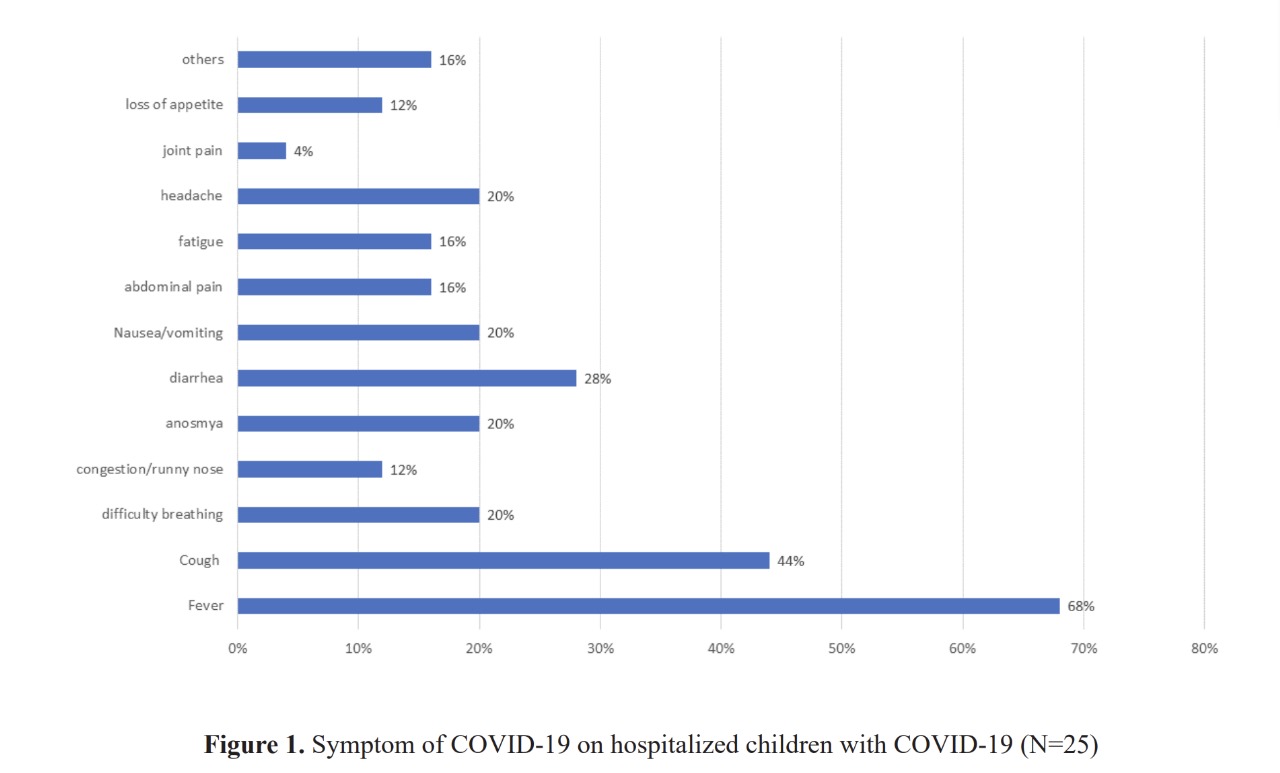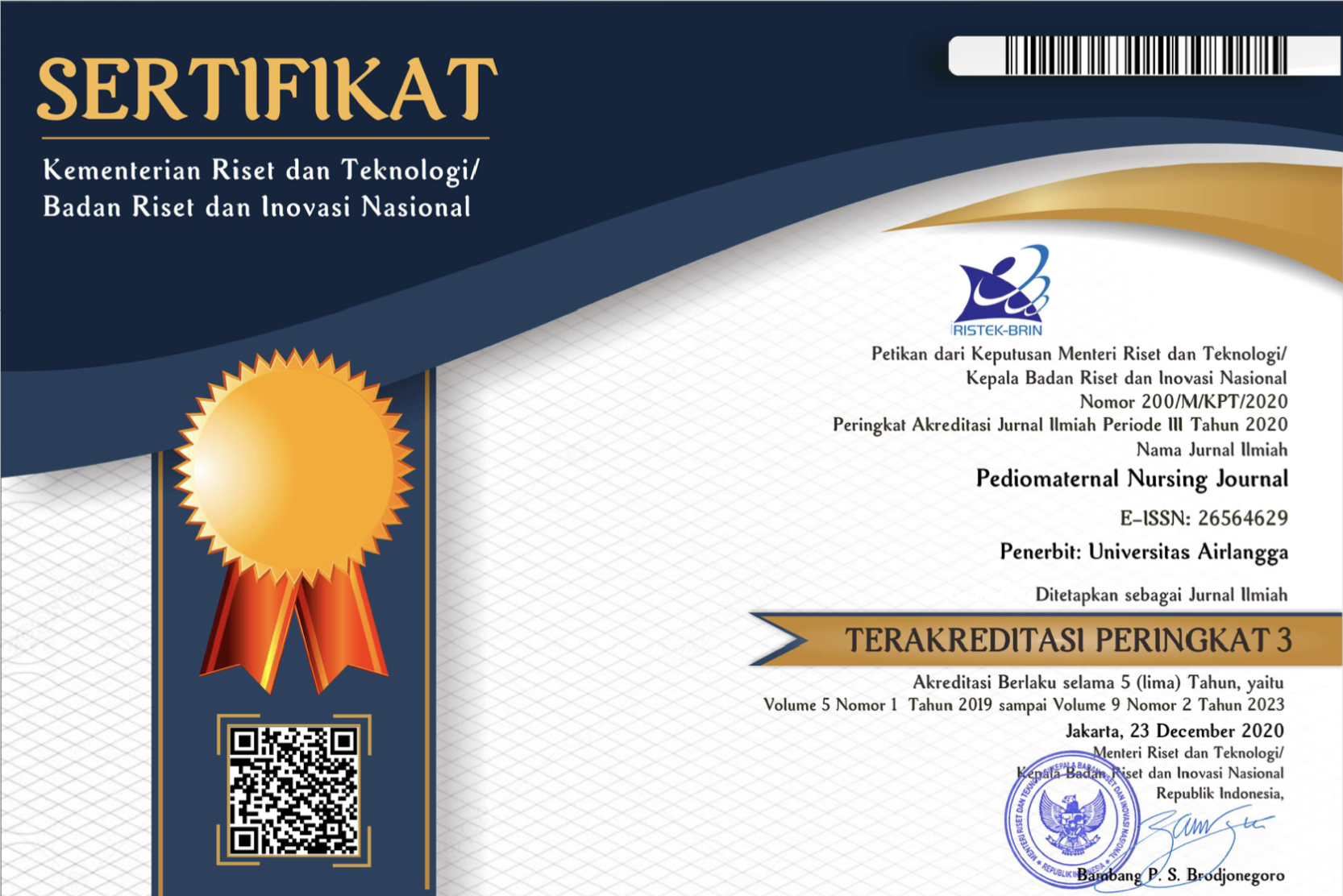Hospitalized children with COVID-19 confirmed: A pilot study

Downloads
Introduction: The number of children confirmed with COVID-19 in Indonesia remains high compared to other countries (12.2%). 13.6% of all cases are hospitalized in quarantine rooms. This study aims to describe children with confirmed COVID-19 who have been hospitalized in Makassar, Indonesia.
Methods: This pilot study was conducted in Makassar City, one of the cities in Indonesia with a high number of COVID-19 cases, in October 2021. A total of 25 children participated through consecutive sampling. This study consisted of children hospitalized in January-August 2021 who had confirmed COVID-19 and were admitted to quarantine or non-quarantine rooms. Inclusion criteria were children under 18 years old and parents who volunteered to complete the questionnaire based on COVID-19 prevention and control guidelines. The questionnaire focused on child and parent characteristics, COVID-19 symptoms, and the number of confirmed cases.
Results: Of the 25 children hospitalized with confirmed COVID-19, 76% were hospitalized in quarantine rooms, 72% were boys, and their ages ranged from 0 to 13 years. The average number of siblings was 2.64±1.63, and the average length of hospital stay was 7.88±3.03 days. The most common symptoms were fever (68%), cough (44%), and diarrhea (28%). The majority of children had two symptoms (40%), were confirmed with COVID-19 once (84%), and were hospitalized one time (95%).
Conclusions: The main characteristics of hospitalized children with confirmed COVID-19 are non-school age and boys. They have multiple symptoms, and fever is the most common. A holistic approach to treating all children hospitalized with COVID-19 should be taken. This study can be used as a baseline for formulating strategies and guidelines for preventing prolonged effects and treating hospitalized children with COVID-19.
Keywords: COVID-19 in children; confirmed children; COVID-19 symptom; hospitalized children
Copyright (c) 2023 Suni Hariati, Erfina, Nurmaulid, Kusrini Semarwati Kadar, Andriani, Hasniar

This work is licensed under a Creative Commons Attribution 4.0 International License.
1. The journal allows the author to hold the copyright of the article without restrictions.
2. The journal allows the author(s) to retain publishing rights without restrictions.
3. The legal formal aspect of journal publication accessibility refers to Creative Commons Attribution (CC BY).





















